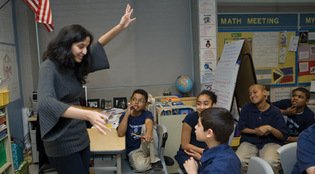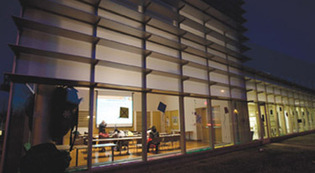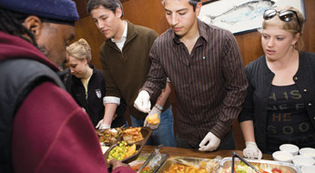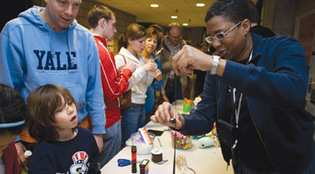 loading
loading
featuresThe anti-ivory tower brigadeYale students have been doing volunteer work in New Haven for decades, often under the umbrella of Dwight Hall, the public-service organization that connects students with education, social justice, and public health projects in the city. But when Rick Levin became president with a mandate to improve Yale's relations with its host city, he put the university's deans and other leaders on notice that every part of Yale should be involved with New Haven. The activities shown here are just a small sample of dozens of programs across the university. Some of them rely on specific expertise, like the Law School's Jerome L. Frank Legal Services Organization, which represents people who cannot afford attorneys; it has advocated for immigrants, public school students, and homeowners with mortgage problems. Others require simply a willingness to make a friend, like Best Buddies, which pairs students with people in the community who have intellectual disabilities. The School of Forestry & Environmental Studies helps create community gardens and parks in vacant lots throughout the city. The School of Nursing brings a traveling exhibit on the human body to local schools. School of Architecture students design and build a house every year for a New Haven family. The athletics department runs camps and clinics for New Haven children. The list is seemingly endless -- or would be, if there were a list. The Office of New Haven and State Affairs wouldn't supply a definitive inventory, feeling it was just too likely that something would get left out.
 Julie BrownView full imageArts (and culture) "You don't always have to talk to show how you feel," Sannya Hede ’10 tells fourth and fifth graders at John C. Daniels School. Feelings can also be conveyed wordlessly by music, she tells them, or a painting, a dance, or ordinary body language. Using lessons she designed, Hede is teaching the children a vocabulary for describing the arts: words like rhythm, pitch, tempo, volume, tone, and movement. Hede's students will use their skills when they visit the Yale Center for British Art, to look at paintings while listening to live Indian music. But the point isn't Indian music per se, Hede says. "At a young age, if you can be exposed to different cultures, you'll keep that with you: you won't react in a negative way when you're seeing something different." Also at John Daniels, School of Music students are teaching 60 children to play band instruments, piano, guitar, Chinese flute, and erhu (Chinese two-stringed fiddle). Another 64 are on the waiting list.
 Julie BrownView full imageCommunity resource The lights burn late in the Rose Center, home of the Yale police and the Dixwell-Yale University Community Learning Center, where Michael Rebmann is teaching a session of his free nine-month course for would-be emergency medical technicians. The learning center is run by Yale's New Haven and State Affairs office to provide education and serve the neighborhood, one of the city's poorest. In the adjacent computer room, engineering student Stacey Demento ’11PhD is helping low-income residents fill out tax forms. On other evenings, the center hosts classes on Internet skills. By day, children fill the center for free after-school activities.
 Julie BrownView full imageFood for thought Fifty-four men and women have arrived for dinner at the United Church Parish House. As they move along the line, 15 Yale students dish out surplus food from Yale's dining halls. About 20 Yale students volunteer each week through Hunger Heroes, the student arm of New Haven's Downtown Evening Soup Kitchen. (Left to right: AJ Haskins ’11, Matthew Lucas ’11, Kenny Castaneda ’12, and Hayley Born ’10.) Among tonight's diners is a 44-year-old out-of-work fence installer. He says he's had some good conversations with the Yale students. "A few of them even try to understand where you're coming from." Justin Schwab ’10JD says that seeing people in need provides perspective on anxiety over "what law firm you're going to be working for. If we all came down and did this, it would maybe chill the rat race."
 Julie BrownView full imageScience as showbiz As a child, mechanical engineering professor Ainissa Ramirez (at right) spent Saturdays watching TV shows like 3-2-1 Contact. Now she runs her own shows for kids -- "Science Saturdays." On this April morning, nearly 200 people will show up at Davies Auditorium to hear Yale neuroscientist Marvin Chun explain how illusions work. Beforehand, dozens of children arrive early to play with science toys. Here, Ramirez demonstrates that putty impregnated with iron particles will move toward a magnet. Other marvels include twisted wire that "remembers" its original shape -- straight -- when immersed in hot water. "Look at those expressions on the kids' faces," says Ramirez. "How often do you see that? Any opportunity that you can make for wonder is amazing."
The comment period has expired.
|
|